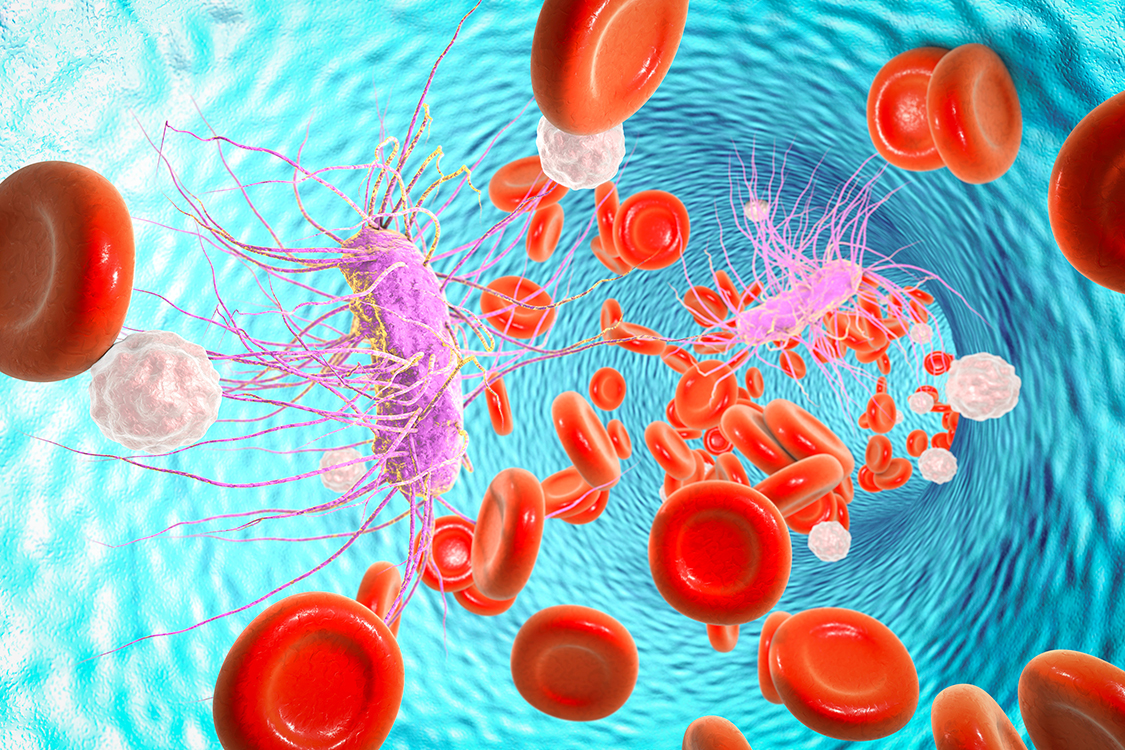Sepsis: The Silent Killer

By Allison Varnum
If you’ve been in the medical field even for a short period of time, you have probably come face to face with sepsis. Sepsis can be devastating and seem to come out of nowhere. There have been times when I’ve cared for patients who were “walkie-talkies” one shift and then come in the next day to find them barely hanging on due to sepsis.
Sepsis has been documented since the writings of Homer and other ancient Greek physicians such as Hippocrates, Aristotle, Plutarch, and Galen. Even with their limited knowledge of infection, they recognized that sepsis leads to death1. The word “sepsis” comes from the Greek meaning of “decomposition of animal, vegetable, or organic matter in the presence of bacteria”. Homer used the word “sepsis” which is derived from the Greek “sepo” meaning “I rot”2.
The definition of sepsis has evolved over the years as we have gained understanding and insight into its pathophysiology3. In the most basic terms sepsis is an infection associated with some degree of organ dysfunction1. The Surviving Sepsis Campaign (SCC) converged in 2002 and committed to developing guidelines for treating sepsis and published the first SCC guidelines in 20044,5.
The fourth and most current SCC guidelines were published in 2021. These guidelines focus on recognition and early treatment of sepsis, determining the source of infection as well as treatment of that infection, hemodynamic care, ventilation, and additional therapeutic treatment recommendations. One of the new recommendations is to use programs and tools to enhance care and to recognize sepsis in acutely ill and high-risk patients. The goal of these guidelines is to utilize a systematic screening process to identify sepsis early6.
Sepsis is still the number one cost of hospitalization in the United States estimated at $62 billion annually with a mortality rate of about 30 percent for patients with severe sepsis7. The need for further research and education persists to reduce mortality6. The Sepsis Alliance has deemed September as Sepsis Awareness Month to help raise awareness of sepsis with the hope of preventing sepsis and improving outcomes7.
We at Turn Medical understand the urgency of improving outcomes for patients. Our years of critical care experience, both at the bedside and in product development and engineering, have driven us to develop therapies to help critically ill patients. Join us as we continue to bring awareness to Sepsis this month to #StopSepsis and #SaveLives. Click here to get involved with Sepsis Awareness Month.
References
- Vincent J. L. (2022). Evolution of the Concept of Sepsis. Antibiotics (Basel, Switzerland), 11(11), 1581. https://doi.org/10.3390/antibiotics11111581
- Funk, D. J., Parillo, J. E., & Kumar, A. (2009). Sepsis and septic shock: A history. Critical care clinics, 25, 83-101. DOI: 10.1016/j.ccc.2008.12.003
- Gyawali, B., Ramakrishna, K., & Dhamoon, A. S. (2019). Sepsis: The evolution in definition, pathophysiology, and management. SAGE open medicine, 7, 2050312119835043. https://doi.org/10.1177/2050312119835043
- Slade, E., Tambar, P.S., Vincent, J.L. (2003). The surviving sepsis campaign: raising awareness to reduce mortality. Critical care, 7, 1-2. DOI 10.1186/cc1876
- 50 Years of Sepsis. Surviving Sepsis Campaign. Retrieved August 12, 2024, from https://www.sccm.org/SurvivingSepsisCampaign/50-Years-of-Sepsis
- Srzić, I., Nesek Adam, V., & Tunjić Pejak, D. (2022). SEPSIS DEFINITION: WHAT’S NEW IN THE TREATMENT GUIDELINES. Acta clinica Croatica, 61(Suppl 1), 67–72. https://doi.org/10.20471/acc.2022.61.s1.11
- Sepsis Awareness Month. Sepsis Alliance. Retrieved August 12, 2024, from https://www.sepsis.org/get-involved/sepsis-awareness-month/






